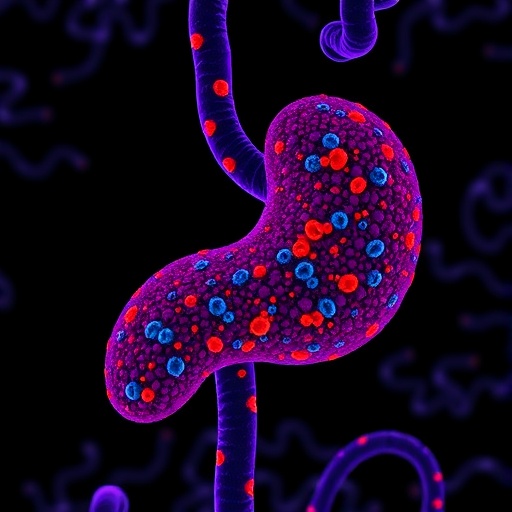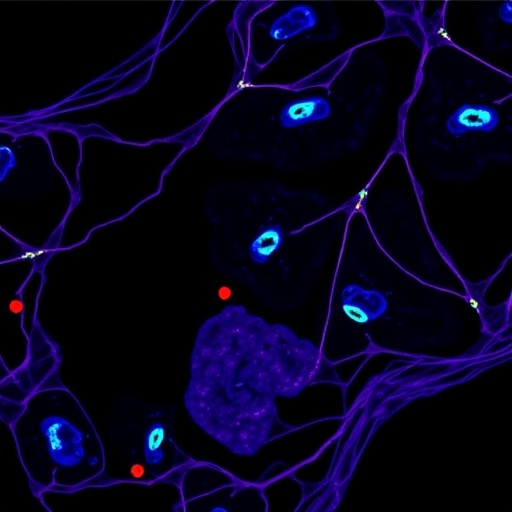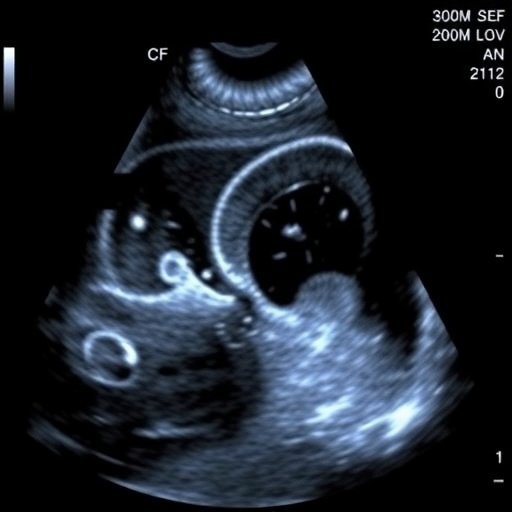
In a groundbreaking study published in the latest issue of BMC Cancer, researchers have leveraged the power of deep sequencing to uncover unique microRNA-mRNA interaction signatures that decisively differentiate pancreatic neuroendocrine tumors (PanNETs) from healthy pancreatic tissue. This pioneering work sheds new light on the intricate molecular interplay governing this rare but increasingly diagnosed form of pancreatic cancer, marking a significant step forward in personalized oncology.
Pancreatic neuroendocrine tumors are a heterogeneous group of neoplasms arising from the hormone-producing cells of the pancreas. While advances have been made in their clinical management, a substantial challenge remains in identifying reliable biomarkers that can guide treatment selection and predict patient outcomes. The study’s authors recognized that microRNAs (miRs), small non-coding RNA molecules known for their critical role in regulating gene expression, could hold the key to unraveling PanNET biology at a deeper, more integrative level.
The researchers undertook comprehensive deep sequencing of both microRNAs and messenger RNAs (mRNAs) from six well-differentiated, low-grade yet high-risk PanNET samples in comparison to seven samples of non-diseased pancreatic tissue. This dual approach enabled them to capture a broad and nuanced landscape of RNA expression changes associated with tumor pathology. Unlike previous studies focusing solely on either miRs or mRNAs, integrating these data permitted construction of detailed miR-mRNA interaction networks, revealing dysregulated pathways that were previously obscure.
Upon analyzing the transcriptomic data, the team identified a subset of microRNAs exhibiting markedly altered expression in PanNETs relative to normal tissue. Notably, both the most abundant and least abundant miRs were scrutinized to predict their potential mRNA targets using in silico algorithms. By intersecting these predicted targets with the differentially expressed mRNAs derived from sequencing, high-confidence miR-mRNA pairs were generated, providing a robust map of regulatory interactions perturbed in tumor cells.
Functional annotation and pathway enrichment analyses of these miR-mRNA pairs illuminated several key biological processes disrupted in PanNETs. For instance, a cluster of interactions involving miR-7 and members of the regenerating (Reg) gene family suggested impairment in neuroendocrine function, a hallmark of these tumors which often affects hormone secretion and cellular differentiation. This finding provides a molecular basis for the functional anomalies observed clinically in PanNET patients.
Moreover, the study uncovered compelling evidence of altered cell adhesion mechanisms, which may underpin tumor progression and metastasis. The miR-216 family was found to regulate genes such as NLGN1, NCAM1, and CNTN1, all central to cell-cell interaction and synaptic stability. Additionally, miR-670’s interaction with claudin genes CLDN1 and CLDN2 further points to disruptions in tight junction integrity, a feature commonly associated with cancer invasion and spread.
Metabolic dysregulation also emerged as a prominent theme, with miR-670 implicated in modulating key enzymes such as BCAT1 and MPST, both of which influence amino acid metabolism and redox balance. Similarly, miR-129 targeting the gene CTH highlights altered sulfur amino acid pathways that could impact tumor cell survival and proliferation. These metabolic aberrations offer potential avenues for therapeutic intervention tailored to the unique metabolic demands of PanNET cells.
By integrating microRNA and mRNA expression profiles, this study transcends the limitations of traditional transcriptome analyses that consider mRNA changes in isolation. The identification of miR-mRNA networks unveils layers of post-transcriptional regulation critical to tumor biology, underscoring the importance of studying regulatory RNA molecules in concert with their targets. Such insights hold promise for the development of more precise biomarkers capable not only of diagnosing PanNETs but also stratifying patients based on likely therapeutic responses.
Crucially, the researchers emphasized that the dysregulated pathways revealed through these networks were not apparent when examining mRNA data alone. This highlights the unique value of integrating multi-omic datasets to uncover hidden dimensions of cancer biology. The approach exemplifies how systems biology can unravel complex molecular interdependencies driving malignancies, ultimately enabling more personalized and effective treatment strategies.
The implications of this research extend beyond biomarker discovery. Understanding the specific miR-mRNA interactions may also guide the design of novel therapeutics aiming to restore normal regulatory functions. For example, synthetic mimics or inhibitors of key miRs, such as miR-7 or miR-216, could be engineered to modulate target gene expression and counter tumor growth or spread.
Furthermore, this study reinforces the growing recognition that pancreatic neuroendocrine tumors are molecularly distinct not only from exocrine pancreatic cancers but also from non-diseased pancreas tissue. This molecular divergence necessitates tailored investigative and clinical approaches, avoiding the one-size-fits-all model that has historically hampered progress in these diseases.
The research team employed stringent bioinformatic pipelines and rigorous statistical approaches to ensure the validity of their findings. By combining high-depth sequencing data with predictive modeling, they have constructed an authoritative resource that future researchers and clinicians can leverage for biomarker validation and therapeutic development.
Taken together, these findings carve a promising path towards precision oncology in PanNETs. As microRNA research rapidly evolves, integrating expression profiles with their respective mRNA targets will likely become a standard practice for dissecting tumor biology at its core. This paradigm shift opens new horizons for early detection, personalized treatment, and ultimately improved survival for patients battling pancreatic neuroendocrine tumors.
In conclusion, by harnessing integrative deep sequencing technologies, this study reveals a complex but coherent network of microRNA-mRNA interactions that define pancreatic neuroendocrine tumors at the molecular level. These novel insights provide a fertile ground for future translational research aimed at exploiting these regulatory axes for clinical benefit. The work exemplifies how cutting-edge genomics is transforming cancer diagnosis and therapy, aligning with the broader movement toward individualized medicine.
As the scientific community continues to unravel the multilayered regulatory architecture of cancer, studies like this underscore the indispensable role of microRNAs in shaping tumor behavior. By illuminating the miR-mRNA dialogue, researchers are now equipped with new tools to dismantle PanNET biology and rebuild therapeutic strategies that reflect the molecular uniqueness of each patient’s disease.
The future of PanNET research and clinical management may well depend on the progression from gene-centric to network-centric models of disease. This study is a pioneering testament to how marrying sequencing technologies with computational biology can accelerate that transition, ultimately steering pancreatic neuroendocrine tumor care towards more effective, personalized interventions.
—
Subject of Research: Molecular characterization of pancreatic neuroendocrine tumors through integrated microRNA and mRNA deep sequencing.
Article Title: Deep sequencing reveals distinct microRNA-mRNA signatures that differentiate pancreatic neuroendocrine tumor from non-diseased pancreas tissue.
Article References:
Matyasovska, N., Valkova, N., Gala, M. et al. Deep sequencing reveals distinct microRNA-mRNA signatures that differentiate pancreatic neuroendocrine tumor from non-diseased pancreas tissue. BMC Cancer 25, 669 (2025). https://doi.org/10.1186/s12885-025-14043-w
Image Credits: Scienmag.com
DOI: https://doi.org/10.1186/s12885-025-14043-w
Tags: biomarkers for pancreatic neuroendocrine tumorsclinical management of PanNETsdeep sequencing pancreatic cancerhormone-producing pancreatic cellsidentifying reliable biomarkers for cancer treatmentmicroRNA-mRNA interaction signaturesmiRNAs and gene expression regulationpancreatic neuroendocrine tumors researchpersonalized oncology pancreatic cancerRNA expression changes in tumorstumor pathology in PanNETsunique tumor signatures in cancer research





